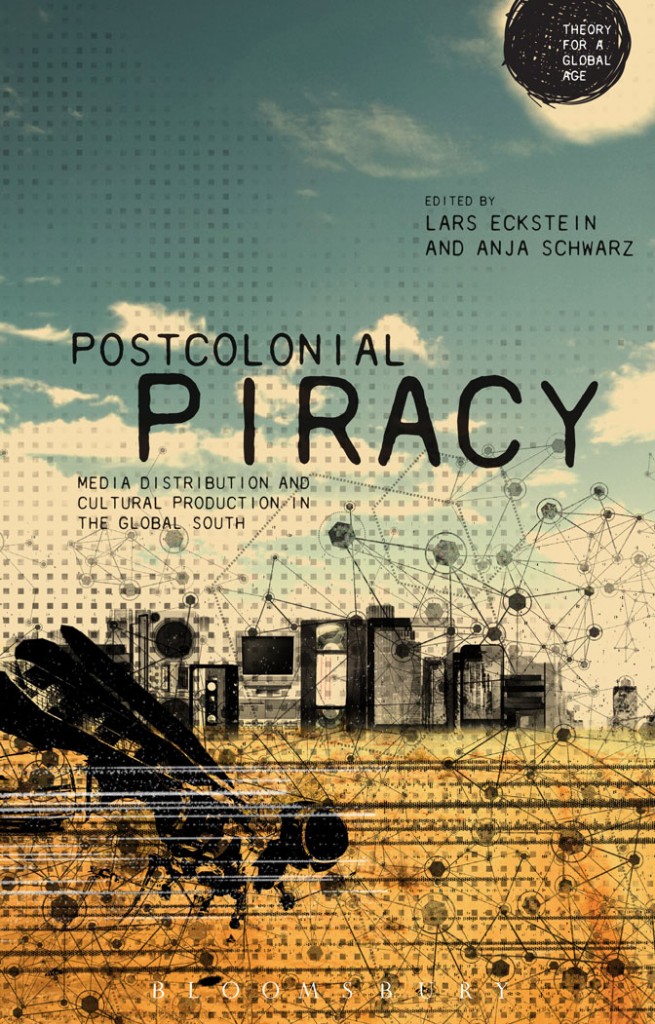 I have an essay in the fine new collection from Bloomsbury Books, Postcolonial Piracy: Media Distribution and Cultural Production in the Global South, edited by my friends/colleagues at the University of Potsdam, Lars Eckstein and Anja Schwarz. The book grew out of a conference on the topic held in Berlin in 2011, and features some of the most important contemporary thinkers of global cultures of the copy, of piracy and alternative distribution/production systems as they are emerging around the world, including Ravi Sundaram and Lawrence Liang. The book is an excellent response/companion to the eye-opening Media Piracy in Emerging Economies report. What the essays and report share is an interest in understanding how informal economies and practices of distribution have established themselves in various parts of the world, how they relate to global capitalism and its more formal legal and economic structures, and how the metaphor of “piracy” helps or inhibits understanding the situation. My own essay, “Depropriation, the Real Pirate’s Dilemma” is one of my first attempts to think about global gift economies, and the possibilities offered by global access to new media, for a flourishing collective life in which property regimes are minimized.
I have an essay in the fine new collection from Bloomsbury Books, Postcolonial Piracy: Media Distribution and Cultural Production in the Global South, edited by my friends/colleagues at the University of Potsdam, Lars Eckstein and Anja Schwarz. The book grew out of a conference on the topic held in Berlin in 2011, and features some of the most important contemporary thinkers of global cultures of the copy, of piracy and alternative distribution/production systems as they are emerging around the world, including Ravi Sundaram and Lawrence Liang. The book is an excellent response/companion to the eye-opening Media Piracy in Emerging Economies report. What the essays and report share is an interest in understanding how informal economies and practices of distribution have established themselves in various parts of the world, how they relate to global capitalism and its more formal legal and economic structures, and how the metaphor of “piracy” helps or inhibits understanding the situation. My own essay, “Depropriation, the Real Pirate’s Dilemma” is one of my first attempts to think about global gift economies, and the possibilities offered by global access to new media, for a flourishing collective life in which property regimes are minimized.
You can download the complete text as a free PDF here.





